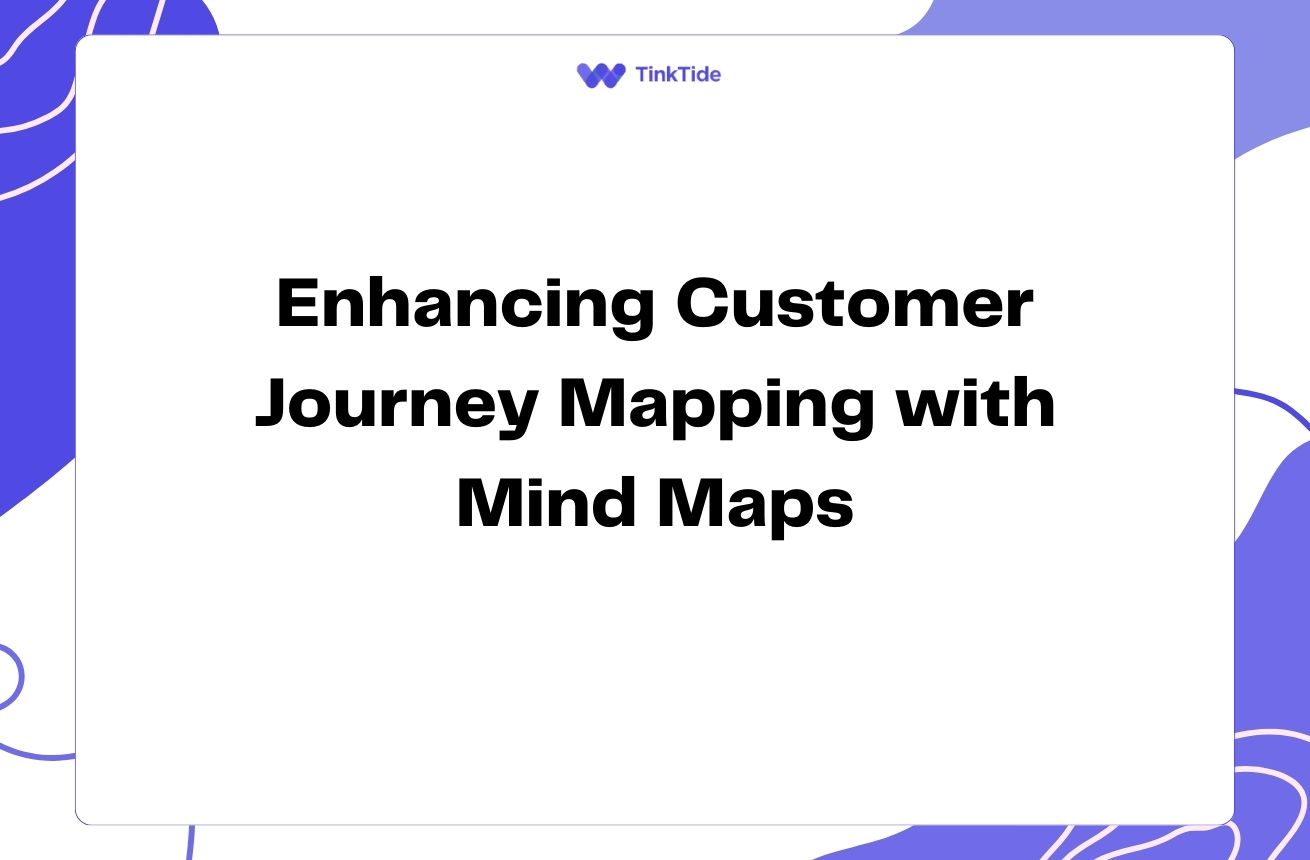Boost Your Communication with Mind Mapping
What is Mind Mapping?
Mind mapping is a powerful visual thinking tool that helps organize information in a way that mirrors how our brains naturally process ideas. It's a diagram that connects information around a central concept, using branches, colors, and images to represent different thoughts and connections.
Created by Tony Buzan in the 1970s, mind mapping has gained popularity as a versatile technique for improving various cognitive skills, including communication. By visually representing ideas, mind maps make it easier to understand complex concepts, remember key points, and explain them to others.
The beauty of mind mapping lies in its flexibility. You can create mind maps using pen and paper, or digital tools like MindMeister or XMind. These tools offer features like real-time collaboration, making them excellent for team communication as well.
How Mind Mapping Enhances Communication
Mind mapping can significantly improve your communication skills in several ways:
- Clarity of thought: By organizing ideas visually, you gain a clearer understanding of the topic at hand.
- Improved memory: The visual nature of mind maps makes information easier to recall during conversations or presentations.
- Enhanced creativity: Mind mapping encourages non-linear thinking, helping you generate more innovative ideas.
- Better structure: It helps in creating a logical flow of information, making your communication more coherent.
- Visual aid: Mind maps serve as excellent visual aids during presentations or discussions.
Using Mind Maps for Effective Presentations
When it comes to presentations, mind maps can be a game-changer. They help you organize your thoughts, create a logical structure, and ensure you cover all key points. Here's how you can use mind maps for presentations:
Start by placing your main topic in the center of the map. Then, branch out with subtopics and supporting details. This process helps you identify the most important information and create a natural flow for your presentation. You can even use the mind map as a visual aid during the presentation itself, guiding your audience through your thought process.
Tools like MindMup allow you to create presentation-ready mind maps that can be easily exported to PowerPoint or Google Slides, making the transition from planning to presenting seamless.
Remember, a well-structured mind map can serve as an outline for your entire presentation, ensuring you stay on track and deliver your message effectively.
Mind Mapping for Better Writing
Whether you're writing an email, a report, or an article, mind mapping can significantly improve your written communication. It helps you organize your thoughts, identify key points, and create a logical structure for your writing.
Start by creating a mind map of your main ideas. Then, expand each branch with supporting details and examples. This process can help you overcome writer's block and ensure your writing is well-structured and comprehensive.
For collaborative writing projects, tools like Coggle allow multiple users to work on the same mind map simultaneously, facilitating better team communication and idea sharing.
By using mind maps in your writing process, you'll find it easier to convey complex ideas clearly and concisely, improving the overall quality of your written communication.
Enhancing Interpersonal Communication with Mind Maps
Mind mapping isn't just for presentations and writing; it can also enhance your interpersonal communication skills. In one-on-one conversations or group discussions, you can use quick mind maps to organize your thoughts and ensure you're communicating clearly.
For example, during a brainstorming session, you can create a collaborative mind map on a whiteboard or using a digital tool. This visual representation helps everyone see the connections between ideas and contributes to a more productive discussion.
In conflict resolution scenarios, mind mapping can help all parties visualize the issue from different perspectives, leading to better understanding and more effective problem-solving.
By incorporating mind mapping into your daily communication practices, you'll find yourself better prepared for conversations and more effective at conveying your ideas.
Steps to Create an Effective Mind Map
Creating an effective mind map is a simple process. Follow these steps to get started:
- Step 1: Start with a central idea or topic in the middle of your page
- Step 2: Draw branches from the center, each representing a main subtopic or idea
- Step 3: Add smaller branches to each main branch for supporting details
- Step 4: Use colors, images, and symbols to enhance visual appeal and memory retention
- Step 5: Review and refine your mind map, adding or rearranging information as needed
Overcoming Common Mind Mapping Challenges
While mind mapping is a powerful tool, some people may face challenges when first starting out. One common issue is feeling overwhelmed by the blank canvas. To overcome this, start with a simple structure and gradually add details.
Another challenge is keeping the mind map organized as it grows. Use different colors for each main branch and its sub-branches to maintain clarity. Don't be afraid to redraw your map if it becomes cluttered; the process of recreating it can further reinforce your understanding.
Remember, there's no 'right' way to create a mind map. The goal is to create a visual representation that makes sense to you and enhances your communication. With practice, you'll develop your own style and find mind mapping an invaluable tool for improving your communication skills.
Address common questions
Here are some frequently asked questions about using mind mapping for communication:
Can mind mapping really improve my communication skills?
Yes, mind mapping can significantly enhance your communication skills. It helps organize your thoughts, improves memory retention, and provides a visual aid for explaining complex ideas. By using mind maps, you can structure your thoughts more coherently, leading to clearer and more effective communication.
Is mind mapping only useful for visual learners?
While mind mapping is particularly beneficial for visual learners, it can be useful for everyone. The process of creating a mind map engages multiple senses and learning styles, making it a versatile tool for various types of learners. Even if you don't consider yourself a visual learner, the act of organizing information visually can still improve your understanding and communication of ideas.
How often should I use mind mapping in my communication?
The frequency of using mind mapping depends on your needs and preferences. You might find it helpful to use mind maps for all your important communications, such as preparing for presentations, writing reports, or planning difficult conversations. As you become more comfortable with the technique, you may naturally incorporate it into your daily communication practices.
Can mind mapping be used in group settings?
Absolutely! Mind mapping is an excellent tool for group brainstorming and collaborative problem-solving. Using a shared whiteboard or digital mind mapping tool, teams can visually represent ideas, see connections, and build on each other's thoughts. This can lead to more productive meetings and better group communication.
Are there any downsides to using mind mapping for communication?
While mind mapping is generally beneficial, it's important to remember that it's a tool, not a solution for all communication challenges. Some people might find creating mind maps time-consuming initially, and in some formal settings, a traditional linear format might be more appropriate. However, with practice, these potential downsides can be minimized, and the benefits often outweigh any initial challenges.
Provide additional resources
The Mind Map Book
A comprehensive guide to mind mapping by Tony Buzan, the creator of modern mind mapping.
MindMeister
A popular online mind mapping tool with collaboration features.
Coggle
A free, simple online tool for creating shareable mind maps.
XMind
A powerful mind mapping and brainstorming tool available for multiple platforms.
Mind Mapping for Dummies
A beginner-friendly guide to getting started with mind mapping.
Summarize key takeaways
Mind mapping is a powerful technique that can significantly enhance your communication skills. By visually organizing your thoughts, you can achieve greater clarity, improve memory retention, and convey ideas more effectively.
Whether you're preparing for a presentation, writing a report, or engaging in a group discussion, mind mapping can help you structure your thoughts and communicate more coherently. It's a versatile tool that can be adapted to various communication scenarios, from personal reflection to team collaboration.
Start incorporating mind mapping into your communication practices today. With regular use, you'll likely see improvements in your ability to understand complex ideas, explain concepts clearly, and engage more effectively in both written and verbal communication.
Enhance Your Communication Skills with Tinktide
Ready to take your communication to the next level? Try Tinktide's innovative tools for mind mapping and more.
Start Your Free Trial
